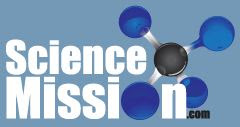
Each
year in the U.S., 5,000 patients receive a diagnosis of ALS, an
incurable neurodegenerative disease that will likely kill them within
two to five years. In the quest to find a cure for these patients, a
team of researchers has identified two promising avenues for developing
new treatments for diverse forms of this devastating disease, which is
also known as amyotrophic lateral sclerosis or Lou Gehrig’s disease.
Their findings are published in a pair of studies: the first appearing
in the journal Cell Stem Cell , and the second in the journal Cell .
“A
minority of patients have a variety of genetic causes of ALS that can
be inherited within families, and a majority have what is known as
“sporadic” disease because its causes are unknown,” said a co-first
author on both studies. “This makes it a difficult challenge to find one
treatment that will work for all patients with ALS.”
To
meet this challenge, the researchers collected skin or blood samples
from patients with both familial and sporadic ALS. The scientists
reprogrammed the skin and blood cells into motor neurons, which are the
nerve cells responsible for movement that degenerate in the disease.
These patient-derived motor neurons provided an opportunity to screen
thousands of FDA-approved drugs and drug-like molecules to find ones
that might be effective against multiple forms of ALS.
In the Cell Stem Cell study,
co-first authors found that several of the most effective drugs and
drug-like molecules increased the activity of androgens, the well-known
group of sex hormones that include testosterone. However, because
androgen-boosting drugs could have undesirable or unsafe side effects
for patients with ALS, the scientists aimed to identify a genetic change
that might yield similar results.
To
accomplish this, they leveraged a public bioinformatics database known
as Connectivity Map. By analyzing this vast database of information
about how drugs affect the genetic landscape underpinning diseases, the
scientists accurately predicted that suppressing the SYF2 gene would
increase the survival of motor neurons derived from patients with
diverse forms of ALS. In addition, suppressing this gene reduced
neurodegeneration, motor dysfunction, and other symptoms in mice with
ALS.
“What’s
really exciting is that SYF2 suppression improved symptoms and
pathology related to a protein called TDP-43, which can become toxic and
is implicated in close to 97 percent of cases of ALS,” said a co-first
author.
In the second study published in Cell,
co-first authors detail how inhibiting a protein, the PIKFYVE kinase,
could represent another effective strategy for treating many different
forms of ALS.
In
an extensive series of experiments, the researchers inhibited PIKFYVE
using the drug apilimod, as well as through genetic and RNA-based
approaches, in fruit flies, roundworms, mice, and motor neurons derived
from patients with different forms of ALS.
They
found that inhibiting PIKFYVE reduced neurodegeneration, improved motor
function, and lengthened life by stimulating motor neurons to clear
toxic proteins through a process of exocytosis, in which membrane-bound
sacs envelop and actively transport waste to the exterior of the cell.
“We
were able to pinpoint precisely how PIKFYVE inhibition mitigates
neurodegeneration, which is important for informing the development of
new targeted treatments,” said a co-first author.
https://www.cell.com/cell-stem-cell/pdf/S1934-5909(23)00005-X
https://www.cell.com/cell/fulltext/S0092-8674(23)00005-3
